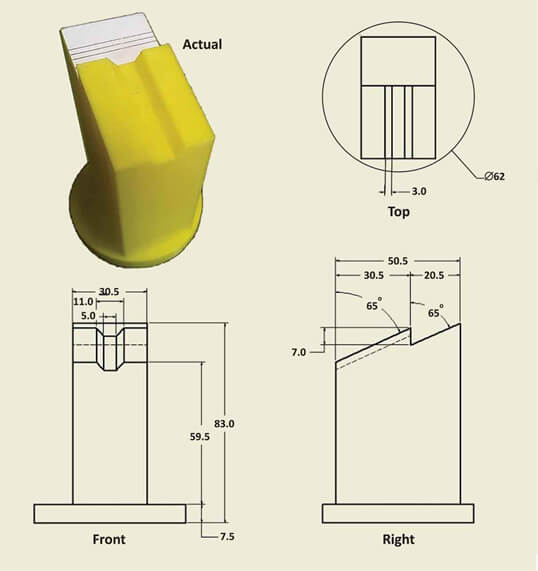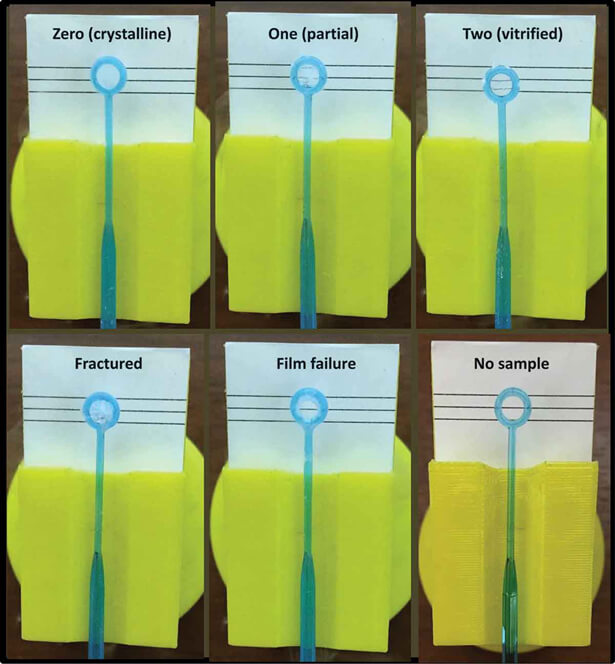
NOLAN TIERSCH - LSU INDUSTRIAL ENGINEERING
Project Summary
Ultrarapid cooling under the appropriate conditions will produce vitrification, a glass-like state used to cryopreserve small sample volumes, but there are a number of major technical drawbacks impeding the application of vitrification to germplasm of aquatic species. These include a lack of suitable devices, and poor reproducibility and comparability among studies due to a lack of standardization.
A standard approach to assess vitrification outcomes was developed. A 3-D printed viewing pedestal (Fig. A) coupled with a classification system (Fig. B) was created to rapidly assess frozen film quality of vitrification loops. Classification time declined with practice from 2.1 ± 0.3 sec (mean ± SD) to 1.5 ± 0.2 sec (after 200 assessments), and assessments were consistently made in < 2.5 sec. Classifications should be reported with representative images allowing harmonization for quality control. This approach permits rapid classification and can be applied for the development of methods including the evaluation of vitrification solution components, concentrations of solutions and target cells, and configurations and volumes of new devices. Future studies should address the custom fabrication of 3-D printed vitrification devices for use with aquatic species and other applications.

